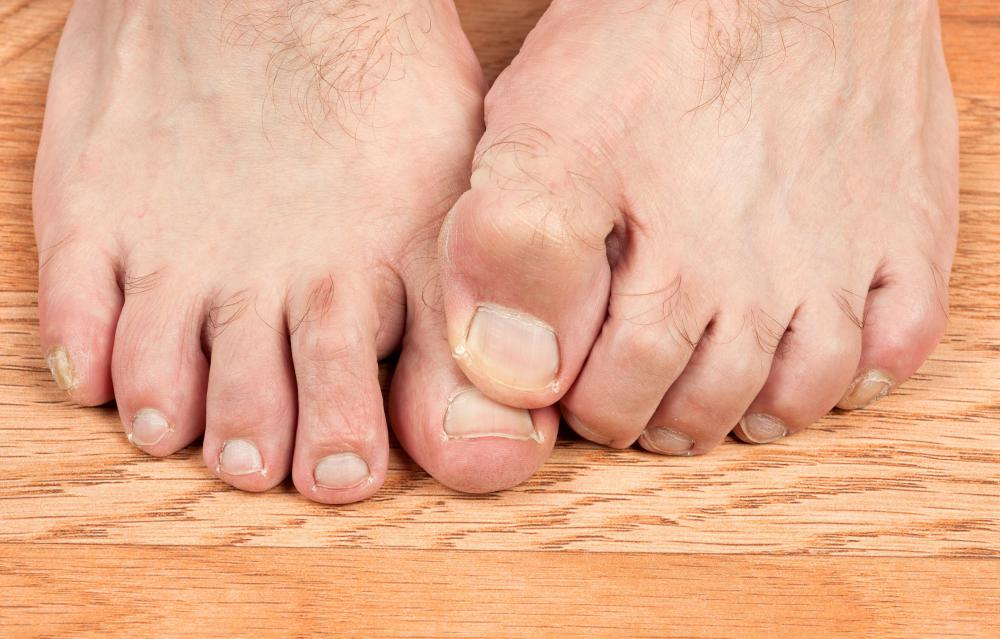At WiseGEEK, we're committed to delivering accurate, trustworthy information. Our expert-authored content is rigorously fact-checked and sourced from credible authorities. Discover how we uphold the highest standards in providing you with reliable knowledge.
What Are the Different Types of Posterior Tibialis Exercises?
The posterior tibialis, or tibialis posterior, is a muscle used to point the foot downward at the ankle, an action known as plantarflexion, and to invert the foot at the subtalar joint, which means that it tilts the sole of the foot inward. This muscle is found along the backside of the tibia and fibula, the two bones of the shin. It forms a tendon that crosses behind the medial malleolus, the large bump on the inside aspect of the ankle, and attaches to several of the foot bones. Posterior tibialis exercises like heel raises with ankle inversion, toe walks, and tracing the alphabet with one’s foot can aid in the prevention of shin splints and the treatment of posterior tibial tendon dysfunction (PTTD).
While there are a variety of useful posterior tibialis exercises, three simple moves include heel raises with ankle inversion, toe walks, and alphabet tracing. The first involves standing barefoot on a flat surface, holding onto a surface for support if the balance is poor or ankles are particularly weak, and rising up onto one’s toes while simultaneously rolling the ankles outward slightly. This will cause the underside of the foot to angle inward slightly and produce greater activation of the tibialis posterior. After pausing at the top, the heels should be lowered until they just touch the floor before rising onto the ball of the foot again.

The second and third posterior tibialis exercises should also be performed barefoot to maximize muscle activation, although they will also be effective while wearing shoes with proper arch support. Toe walks involve rising onto one’s tiptoes and walking forward without allowing the heels to drop to the floor. Alphabet tracing is performed seated with the legs dangling and involves tracing the letters of the alphabet with the big toe pointed downward toward the floor. Other posterior tibialis exercises may involve sitting with the legs extended in front of the body and a resistance band wrapped around the arch of the foot while pointing the toes away from the body and to the inside.

As a central muscle of the leg and one whose tendon attaches to as many as nine foot bones, the tibialis posterior is critical to the ability to push off the ground during gait movements as well as to the structural maintenance of the arch of the foot. Running from behind the tibia and fibula just below the knee joint down the center of the back of the leg, it enters the foot from behind the inside of the ankle as a single tendon. This tendon then splits into three portions whose subdivisions attach to the second through fourth metatarsals just in front of the arch as well as to several of the tarsal bones behind the arch. When the muscle contracts, it pulls backward and upward on the underside of the foot, hinging the foot downward at the ankle while at the same time pulling the sole of the foot inward.
Strengthening the tibialis posterior also means that in addition to properly performing these functions, the muscle will be able to uphold the arch of the foot. A weakened posterior tibialis can play a role in a variety of movement dysfunctions, from shin splints to flat feet and a collapsed arch, symptoms of a posterior tibialis tendon that is not doing its job. Posterior tibialis exercises can improve the muscle function and are of particular importance to runners, who are prone to these conditions.
AS FEATURED ON:
AS FEATURED ON:












Discuss this Article
Post your comments